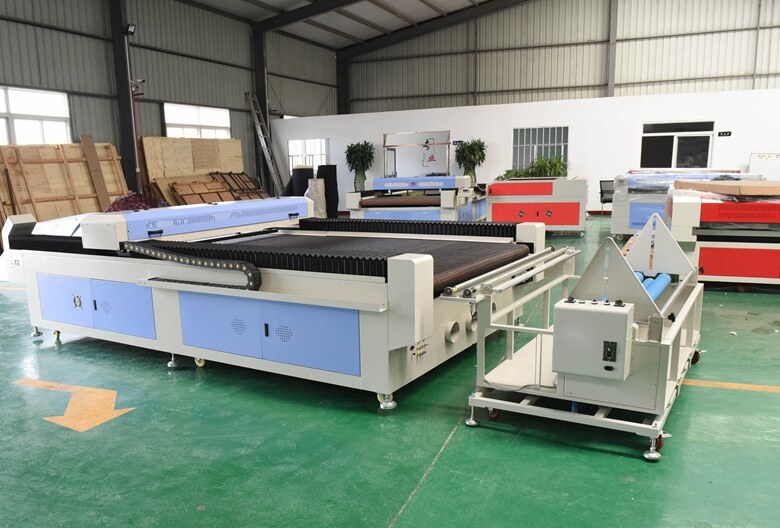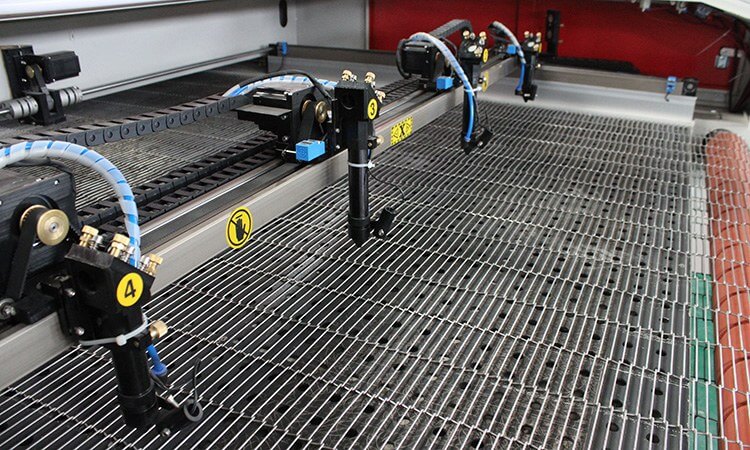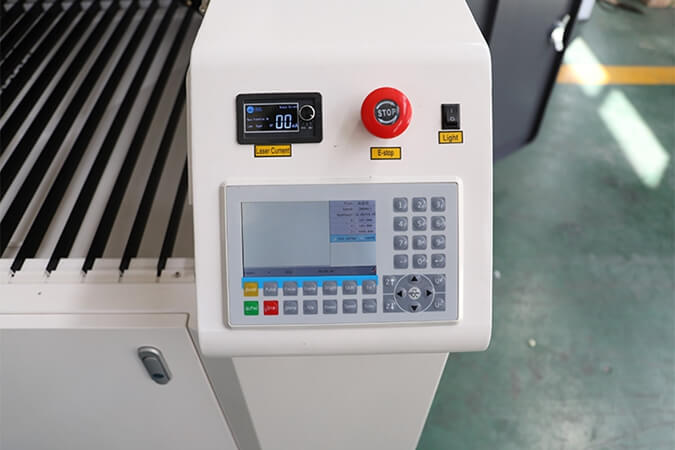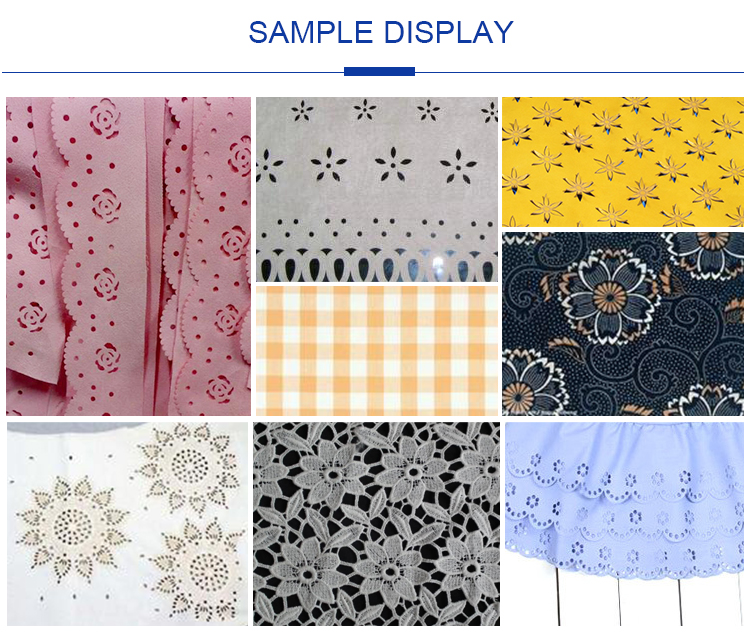Buyer Guide
Textile Laser Cutting Machine
In the ever-evolving world of fashion, innovation plays a crucial role in pushing boundaries and creating unique designs. One such innovation that has revolutionized the fashion industry is the textile laser cutting machine. This cutting-edge technology has transformed the way fabrics are cut, allowing designers to unleash their creativity and produce intricate patterns and designs with precision.
Textile Laser Cutting Machine
To meet more varieties of cutting requirements for fabric in different sizes, IGOLDENLASER widens the laser cutting machine to 1600mm * 1000mm. Combined with the conveyor table, roll fabric and leather can be allowed to convey and laser cutting for fashion and textiles without interruption. In addition, multi-laser heads are accessible to enhance the throughput and efficiency. Automatic cutting and upgrade laser heads make you stand out with the quick response to the market, and impress the public with the excellent fabric quality. To meet different requirements for cutting various fabrics and textiles, IGOLDENLASER offers standard and customizable laser cutting machines for you to choose from.

| Model | IGL1610 |
| Work area | 1600*1000mm |
| Laser power | 80w (100 /130/w option) |
| Laser type | co2 |
| Water chiller | CW3000 (5000/5200 option) |
| Laser head No. | One |
| Linear rail | Taiwan Hiwin |
| Table | Blade & Honeycomb |
| Cooling mothod | Water cooling/water break protection |
| Engrave speed | 0-2000mm/min |
| Cutting speed | 0-36000mm/min |
| Resolution | ±0.01mm |
| System | RDC6442s with Wifi |
| Software | Laserwork v8 |
| Graphic format supported | BMP,PLT,DST,DXF,AI,JPG,etc. |
| Software supported | Autocad, Coreldraw,Photoshop, etc. |
| Laser output | 0-100% |
| Operating temperature | 0-45℃ |
| Operating Humidity | 5-95% |
| Working mode | Leadshine stepper motor ( Servo motor) |
| Min shaping character | 1*1mm English |
| Voltage | 220V±10%, 50-60Hz, single phase ( 110V- option) |
| Control system | DSP |
| Accessories | Water cooling unit, Air Pump, Exhaust Blower Unit |
Auto Feeding System
The Auto Feeder combined with the Conveyor Table is the ideal solution for series and mass production. It transports the flexible material (fabric most of the time) from the roll to the cutting process on the laser system. With stress-free material feeding, there is no material distortion while contactless cutting with laser ensures outstanding results.
Laser Heads – Option
Most simply and economically to speed up your production efficiency is to mount multiple laser heads on the same gantry and cut the same pattern simultaneously. This doesn’t take extra space or labor. If you need to cut a lot of identical patterns, this would be a perfect choice for you.

Nesting Software – Option
When you are trying to cut a whole lot of different designs and want to save material to the largest degree, Nesting Software will be a good choice for you. By selecting all the patterns you want to cut and setting the numbers of each piece, the software will nest these pieces with the most usage rate to save your cutting time and roll materials. Simply send the nesting markers to the Flatbed Laser Cutter 160, it will cut uninterruptedly without any further human intervention.

Applications of Textile Laser Cutting Machines
Textile laser cutting machines have found applications beyond the fashion industry. Their precision and versatility make them suitable for various industries and creative endeavors. Let’s explore some of the applications of textile laser cutting machines:
- Automotive Industry: Textile laser cutting machines can be used in the automotive industry for cutting and engraving materials such as leather, fabric, and carpet. They are used to create custom interior designs, logos, and patterns for car seats, headliners, and floor mats.
- Upholstery: In the upholstery industry, textile laser cutting machines are used to cut and shape fabrics for furniture, including sofas, chairs, and cushions. They enable precise cutting of intricate designs and patterns, enhancing the overall aesthetic appeal of the furniture.
- Home Decor: Textile laser cutting machines are also utilized in the production of home decor items such as curtains, blinds, and decorative textiles. They allow for the creation of unique and intricate designs that can transform the look and feel of a living space.
- Technical Textiles: Technical textiles, which are fabrics engineered for specific functionalities, can benefit from the precision and versatility of textile laser cutting machines. These machines can cut and shape technical textiles used in industries such as aerospace, medical, and sports. Examples include cutting airbags, surgical drapes, and sportswear with ventilation patterns.
- Crafts and DIY Projects: Textile laser cutting machines have become popular among hobbyists and DIY enthusiasts. They can be used to create custom designs on fabrics for various crafts, such as appliques, patches, and stencils. These machines enable individuals to explore their creativity and personalize their projects.
- Fashion Accessories: Apart from garments, textile laser cutting machines are used to create intricate designs and patterns on fashion accessories like handbags, shoes, and belts. They allow designers to add unique details and embellishments to their creations, making them stand out in the market.
- Prototyping and Sampling: Textile laser cutting machines are invaluable in the prototyping and sampling phase of fashion design. Designers can quickly create samples and test different design iterations without the need for manual cutting and sewing. This saves time and resources in the product development process.

CO2 Laser VS CNC Oscillating Knife Cutting Machine
For Textile Cutting
The choice between a CO2 laser and a CNC oscillating knife cutting machine for textile cutting depends on your specific needs, the type of textiles you work with, and your production requirements. Both machines have their advantages and disadvantages, so let’s compare them to help you make an informed decision:
1. Precision:
CO2 lasers offer high precision and can cut intricate designs and patterns with fine details. They produce clean, sealed edges, which is important for certain applications.
2. Versatility:
CO2 lasers can cut a wide range of fabrics, both natural and synthetic, including delicate materials like silk and lace. They are also suitable for cutting synthetic materials and leather.
3. Speed:
CO2 lasers are generally faster than CNC oscillating knife-cutting machines for certain textile applications, especially when cutting complex shapes with a single layer each time. The actual cutting speed can reach 300mm/s to 500mm/s when laser-cut textiles.
4. Minimal Fraying:
CO2 lasers minimize fraying and unraveling of fabric edges due to the heat-affected zone being relatively small.
5. No Tool Changes:
Unlike CNC oscillating knife machines, CO2 lasers do not require tool changes, making them more efficient for handling a variety of cutting tasks.
CNC Oscillating Knife Cutting Machine:
1. Material Compatibility:
CNC oscillating knife machines are well-suited for cutting a wide variety of materials, including textiles, foams, and flexible plastics. They are particularly suitable for thick and rigid materials.
2. Versatility:
While they may not offer the same level of precision for intricate designs as CO2 lasers, CNC oscillating knife machines are versatile and can be used for a range of cutting and trimming applications.
3. Lower Maintenance:
CNC oscillating knife machines often require less maintenance than CO2 lasers since they don’t have laser tubes, mirrors, or optics that need cleaning and alignment. But you need to change knives every few hours for the best cutting results.
4. No Heat-Affected Zone:
CNC knife cutters do not generate a heat-affected zone, so there is no risk of fabric distortion or melting.
5. Clean Cuts:
For many textiles, CNC oscillating knives can produce cleaner cuts with minimal risk of burning or charring compared to CO2 lasers.
Textile Laser Cutting Machine FAQ
Q1: How does a textile laser cutting machine work?
A textile laser cutting machine works by emitting a high-powered laser beam that cuts through fabrics with precision. The laser beam is controlled by a computer, which follows a digital design or pattern to guide the cutting process. The laser beam melts or vaporizes the fabric, creating a clean and precise cut.
Q2: Can textile laser cutting machines cut through all types of fabrics?
Textile laser cutting machines can cut through a wide range of fabrics, including silk, cotton, leather, lace, and more. However, certain fabrics with reflective or heat-sensitive properties may require special considerations or alternative cutting methods.
Q3: Are textile laser cutting machines safe to use?
Yes, textile laser cutting machines are designed with safety features to ensure the well-being of users. These machines often have enclosed cutting areas, protective shields, and safety interlocks to prevent accidents and minimize the risk of exposure to the laser beam.
Q4: How do textile laser cutting machines contribute to sustainable fashion?
Textile laser cutting machines contribute to sustainable fashion by minimizing material waste and reducing energy consumption. The precise cutting capabilities of these machines ensure that fabric is used efficiently, leaving minimal scraps behind. Additionally, the automation of the cutting process reduces the energy consumption associated with traditional cutting methods.
Q5: Can textile laser cutting machines be used for other applications besides fashiondesign?
Yes, textile laser cutting machines have applications beyond the fashion industry. They can be used in various industries such as automotive, upholstery, home decor, and even in the production of technical textiles. The precision and versatility of these machines make them suitable for cutting and engraving a wide range of materials, opening up possibilities for creativity and innovation in different fields.

IGOLDEN BLOG
Thank you for visiting the iGOLDENCNC website. iGOLDENCNC is the professional supplier of CNC machinery application solution, within the business of producing and selling CNC machinery and accessories.